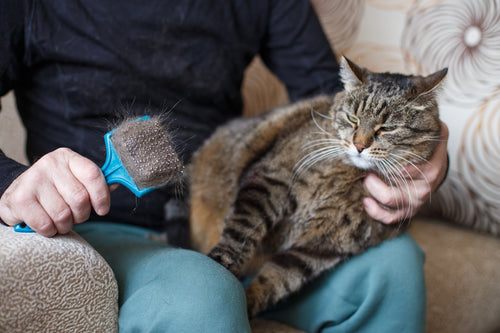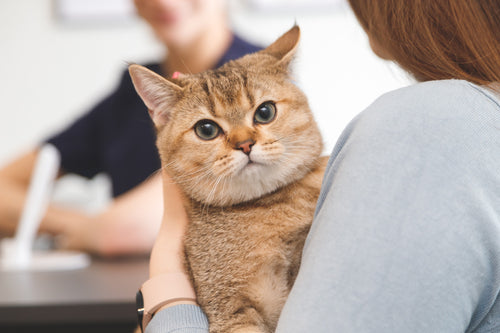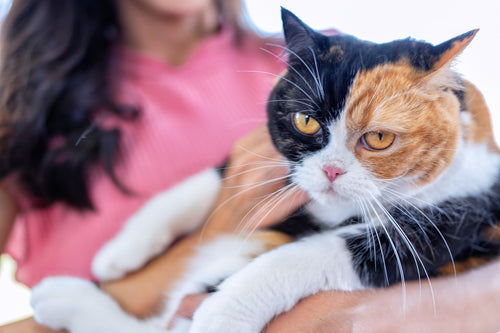If you’re part of a multi-pet household, you’re likely familiar with the occasional tussle between your furry friends. As the saying goes, “it’s all fun and games until somebody gets hurt.” With all of the chasing, pouncing, biting, snarling, and growling, though, it can be hard to know whether the roughhousing is even “fun and games” in the first place.
Becoming familiar with your pets’ behavior and body language is key when it comes to knowing the difference between a play fight and a real fight between your cats and dogs; it’s also good to know the appropriate steps to take when breaking up a dog fight or cat fight.
Why Do Pets Play Fight?
Playing together is an important part of socialization. Most puppies and kittens begin wrestling with their litter mates from a young age—through this play fighting, they learn about communication and self control. This is when fur babies start to figure out that if they bite or scratch their sibling too hard, the game is over.
As puppies and kittens grow up, their playfulness tends to stick around. No matter their age, play fighting is also a good form of exercise, especially since it can help your pet use up some of that excess energy.
Additionally, play fighting can be a healthy outlet for your pet’s prey drive. Chasing, stalking, and pouncing are natural instincts for dogs and cats alike, and chasing a furry companion is a fun way to play pretend predator and prey.
Of course, there’s also the most simple explanation—play fighting is fun! However, sometimes the game can go too far, or one pet may not be as enthusiastic as the other, and that play fighting can turn into real fighting.

Playing vs. Fighting: Dogs
As a pet owner, it’s good to know whether your dog is playing or fighting. After all, you don’t want to unnecessarily pull him away from an innocent game; you also don’t want to let a real fight go on longer than it needs to.
Signs that dogs are playing include:
- Front down, and rear end up—like a play bow. Sometimes, an excited pooch may even slap his front legs on the ground as a way to initiate play.
- Open mouth (like a big, silly grin)
- Bouncy, relaxed movement
- Showing vulnerability by “falling” and being caught
- Play biting (soft nibbling)
- Wagging tail
- Returning for more, and taking turns chasing each other
Signs that dogs are fighting include:
- Raised hackles
- Stiff body
- Closed mouth, sometimes with a growl or snarl
- Curled lips
- Ears pinned back
- Tucked tail (fear) or raised tail (asserting dominance)
- Short, quick, strategic movements
- Generally a brief encounter, with the “loser” quickly leaving the scene
If part of a group play date, never allow your dog to be ganged up on, even if it looks like playing. This could get out of hand quickly, and could cause a negative association with socializing in general which may lead to anxiety. If your dog is frequently getting into brawls at the dog park, he may be better off playing with peers at home and/or sticking to play dates with familiar dogs.
Dogs are naturally territorial creatures, to be mindful of possessiveness over toys and food and remove them from the situation if needed.
If you notice a dog becoming territorial, or one dog isn’t quite as enthusiastic as the other, it may be a good idea to intervene before that disinterest turns into annoyance and maybe even aggression. Engage the more playful pup with a chew toy or a game of fetch so he can get some of his playful energy out without bugging his pal.
For dogs with nervous energy, try Pet Honesty’s Premium Hemp Calming Chews, which use natural ingredients to help calm and soothe an anxious dog.

Playing vs. Fighting: Cats
Cats love to stalk and pounce on their peers as a game of pretend hunting.
Signs that your cats are playing include:
- Play biting (soft nibbling)
- Retracted claws
- Taking turns chasing each other and switching between top and bottom wrestling positions
- Coming back for more!
Cats that often groom each other and cuddle together are most likely playing, but be aware of any red flags. Signs of a cat fight include:
- Flattened/pinned back ears
- Puffed up tail
- Hissing
- Baring teeth
Cats who fight frequently may be uncomfortable with each other in general. You may see signs of insecurity such as excessive hiding, bathroom incidents outside of the litter box, or aggression.
Be sure you have enough toys and interactive activities available, otherwise your cats may continue to use each other as outlets (and may not always agree about whether it’s playtime). If you notice that one cat seems to be doing all of the chasing or dominating, the game may not be fun for both of them. If one cat is more playful than the other, redirect her attention with some quality human-feline play time to give the less playful kitty a break.
If you suspect your cats are fighting, distract them with a toy such as a feather wand or laser—you don’t want to get too close or try pulling one away, or you might end up with some battle wounds of your own. Or, try chasing one into another room or make a loud noise as a distraction.
Promote a healthy cat with Pet Honesty’s cat supplements.

Can Dogs and Cats Play Together?
Some fights occur as a result of misreading body language, since cats and dogs communicate differently. For example, a wagging tail on a dog is generally an indication of playfulness, while a cat may be expressing more negative feelings.
While cats and dogs may not be natural best friends, it’s still possible for them to get along with each other. Just make sure each pet has their own space to retreat to when they need some space.
Sources:
https://www.akc.org/expert-advice/training/are-they-playing-or-fighting/
https://www.hillspet.com/dog-care/play-exercise/dog-aggression-or-playing
https://www.comfortzone.com/behavior-blog/multi-cat-tension/are-my-cats-playing-or-fighting
https://be.chewy.com/are-your-cats-playing-or-fighting/






